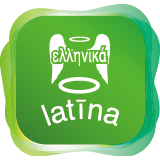 |
CCGL9024 Global IssuesThe Life and Death of Languages: Diversity, Identity and GlobalizationThis course is under the thematic cluster(s) of:
|
Course Description
This course critically examines the issue of endangered languages, with particular focus on the role of globalization, ethnic identity and language policies in the life and death of languages. Since ancient times, population movements, war and trade have affected the ways in which different languages have fared. Western colonization of many parts of the world brought about drastic changes in the ecology of languages, in particular a dramatic decrease in diversity. The distribution of languages in the world today reveals that 78% of humans today express themselves in one of 85 large languages, while the remaining groups of humans speak over 5,000 different minor languages. Why is there such an imbalance? The fact that a few global languages represent modern and powerful nations while thousands of small languages usually represent indigenous and marginalized groups leads to a discourse of endangerment in which a threatened language requires “saving” or revitalization efforts. Others argue that the demands of modernity and globalization challenge this view. Who is right? In this course students are led to a deeper examination of the political, cultural and educational forces that shape the destiny of languages, so as to be able to more insightfully discuss the tension between preservation and modernization of human cultural heritage in modern society.

Course Learning Outcomes
On completing the course, students will be able to:
- Demonstrate an awareness of linguistic diversity in human history.
- Critically examine the discourse of linguistic endangerment and revitalization and its foundations.
- Identify and explain the challenges that globalization pose to diversity.
- Demonstrate a critical evaluation of the politics of diversity in multilingual societies, in particular educational policies.
- Describe and discuss the relationship between language and identity at the individual and societal level.
Offer Semester and Day of Teaching
First semester (Wed)
Study Load
| Activities | Number of hours |
| Lectures | 24 |
| Tutorials | 10 |
| Reading / Self-study | 48 |
| Independent research and fact-finding tasks | 6 |
| Assessment: Essay / Report writing | 20 |
| Assessment: Presentation (incl preparation) | 20 |
| Total: | 128 |
Assessment: 100% coursework
| Assessment Tasks | Weighting |
| Essay | 40 |
| Group project | 40 |
| Tutorial participation | 20 |
Required Reading
- Evans, N. (2010). Dying words: Endangered languages and what they have to tell us. Chichester, UK: Wiley-Blackwell.
- Fleming, K., & Ansaldo, U. (2019). Revivals, Nationalism, and Linguistic Discrimination: Threatening Languages (1st ed.). Routledge.
- Makoni, S., & Pennycook, A. (Eds). (2007). Disinventing and reconstituting languages. Disinventing and reconstituting languages. Clevedon: Multilingual Matters. [pp. 1–41]
- Nettle, D., & Romaine, S. (2000). Vanishing voices: The extinction of the world’s languages. New York: Oxford University Press.
Course Co-ordinator and Teacher(s)
| Course Co-ordinator | Contact |
| Professor K. Yakpo School of Humanities (Linguistics), Faculty of Arts |
Tel: 3917 7117 Email: kofi@hku.hk |
| Teacher(s) | Contact |
| Professor K. Yakpo School of Humanities (Linguistics), Faculty of Arts |
Tel: 3917 7117 Email: kofi@hku.hk |

